According to You: The worst engines you’ve experienced
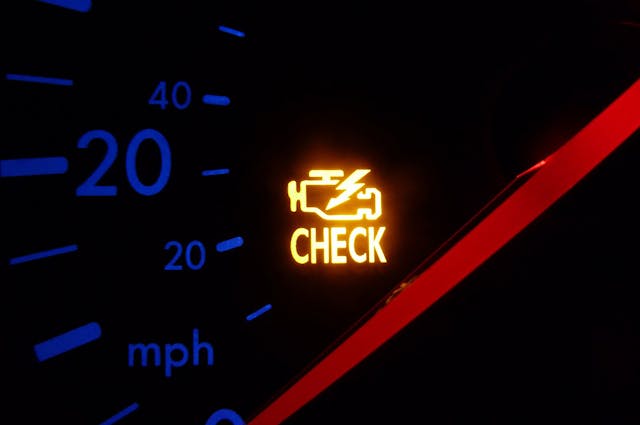
We recently asked about the worst engines you’ve experienced in your lifetime, and you certainly delivered. Perhaps too well, as the responses were overwhelming. How on earth could we cover all the bad engines made over the years? Our solution to this (wonderful) problem was thus: we thinned the herd down to responses that specifically included personal experiences that add a little more value than just the usual re-hashing of the same stories you’ve heard elsewhere.
Let’s get right to it!
The Iron Duke four-cylinder
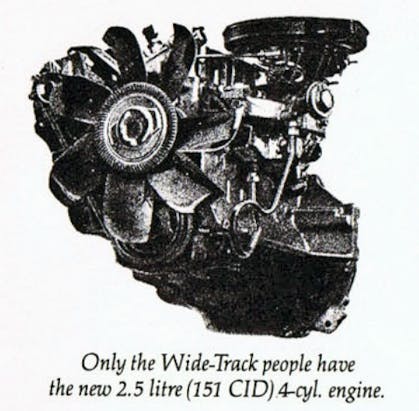
Charles A Parent said that the worst engine he ever owned was a Pontiac Iron Duke that “constantly ate Throttle Position Sensors and cracked the cast iron exhaust manifold three times.”
While the inclusion of TPS sensors suggests it might be the later TECH IV design, combining that with a four-speed shifter “that was prone to locking, in or out of gear” caused him to Lemon Law the car.
VW Type 412 1.8-liter flat-four
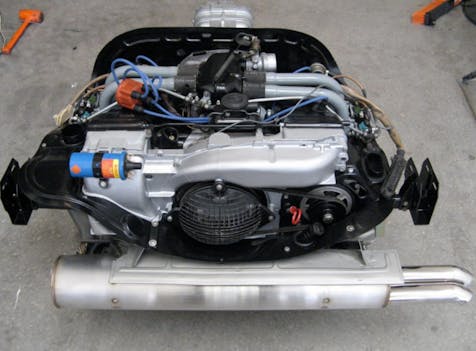
Hagerty Community user lasersailor came in strong with this one:
“I’ve got you all beat. 1679cc flat 4 in my parents 1972 VW411 wagon with a wimpy 3-speed auto transmission. Two fires caused by improper fuel injection repair at the so-called dealer in Florida. The 2nd fire caused near total immolation. Plus it was slower than a Pinto or Vega.”
Toyota 3VZ-E V-6

Hagerty Community member John Nichols gave a very balanced perspective on one of the more desirable and durable engines from Toyota, because sometimes tearing into something can turn into quite a shock:
“I recently got involved with a 1992 Toyota V-6 rebuild. The truck had a blown head gasket, the oil was full of water. Obviously these vehicles have a huge cult following of being amazingly reliable which I’m sure is well deserved.
HOWEVER when things do start to go it will cost you and assembly must be performed like a surgical operation. Parts and pieces and shrouds, crossover exhaust converters not to mention miles of vacuum lines weird little filters and of course the timing belt alignment are all part of the problem, not to mention the famous under the manifold sensor wire.
Ordinarily working on engines can be kind of fun be it a small block or an English roadster, although you have to make little tweaks often and pay attention to detail the reward of a few hours attention is measurable performance improvement.”
Chrysler 2.2-liter four-cylinder

This one might spark some controversy, as Chrysler’s 2.2-liter engine was designed specifically for a new platform and a new automotive reality. That said, Hagerty Community member David likely had an older model, but his experiences are certainly worth a read:
“As I recall memories of the early 80’s K Car with that darn 2.2 liter I feel a tension headache coming on. That engine had more use as a boat anchor, and I remember my poor dad spent more time and dollars repairing shoddy engineering design.
Crazy but true, when I got my licence and started to drive – I took that K Car to town and the engine actually fell out of the car! The front motor mount failed in the middle of an intersection. I guess even the car itself was sick of that engine and tried to spit it out.”
I reckon that A. Raymond had it even worse, but at least the dealership asked him a rather hilarious question:
“I had a Chrysler 2.2 non turbo forced upon me as a young fellow. Driving home from work in rush hour traffic, the engine decided it was time to digest itself. (It had 25,000 miles on it at the time.) The dealership accused me of ‘racing’. I laughed long and hard at the suggestion and told them I wouldn’t be doing too much racing with 88 hp.
After begrudgingly replacing the motor under warranty, I drove it another 3 months before selling it to another unfortunate schmuck. It was the worst thing I have ever had the displeasure of having to drive. I look back now and still laugh at that ‘you must have been racing’ suggestion.”
Oldsmobile Quad 4 four-cylinder

Brian was pretty sick of the Iron Duke in his 1985 Cutlass Calais, noting it was reliable but also “noisy and weak.” So imagine his delight when the Quad 4 made a splash in 1987:
“I was so excited to get one of the first Quad 4s. More power and much quieter. My love affair ended at 67,000 miles when it had a complete meltdown out of warranty. My very last GM car.”
And then we heard from Tom:
“Yes, I had the Quad 4 in a Pontiac Grand Am. Delightful, until the head gasket failed. Dealership near my work (different state from purchase point) tried really hard not to cover the failure but, after showing how much coolant I was adding, did a cheap fix. Probably tore it down to only replace the head gasket because it failed again, just out of warranty.
At that point, I was back where I bought the car, and they repaired it again, but it still didn’t seal. Any time I got in traffic, it would overheat and blow out the coolant. Tried checking the cooling system (radiator, etc.) without finding any issues. Aluminum head must have been significantly warped by that point. Finally sold that car. Too bad as it was fine as long as it was moving.”
Honda CVCC four-cylinder

Dan T Man takes us over to Honda, a brand we don’t usually hear about in this context. But he noted that the “1751 CC engine in the original Honda Accord was known to develop a head gasket leak between the #3 and #4 cylinders every 30,000 miles.” He said that it ran fine otherwise, and learned that “when the engine lost about 50 rpm at idle it was time for another change” of the head gasket.
AJD went further:
“My first brand-new car was a 1977 Honda Civic CVCC. Within 60K miles it had eaten 3 water pumps and blown its head gasket. The head gasket had been recalled but would not be replaced until blown. It really blew up nicely and the engine never ran right again.”
Buick 3.8-liter (Malaise Era) V-6

Don’t take this as a slam on Buick’s tried-and-true, 90-degree, 3.8-liter V-6. Odds are the problems that Dwayne Wertman experienced came from the Malaise Era engineering mounted to its induction and exhaust systems.
“I bought a new 1981 Oldsmobile Cutlass V-6. The engine would ping and rattle just trying to keep up with traffic. Often times it would stall in the intersection. I returned to the dealership on many occasions. It was a really good dealership, [because] after eight months they bought back and all I lost was tax and license.”
eagerdever drives home the point of this being an issue from the 1970s and early 1980s:
“I experienced oiling problems accompanied by valve train noise and the engine light in a 3.8 V-6 in a ’79 Olds Cutlass wagon. I’d stop and let the engine cool down, and then be on my way. The crankshaft finally broke in half. Because it broke on the diagonal, the engine continued to run, though poorly. A co-worker had similar problems with that engine in a Grand Prix, replaced under warranty. Another co-worker lost the engine in his Buick Skyhawk (the Buick version of the Chevy Monza). All three were due to poor oiling.”
Mitsubishi 4G54 four-cylinder with Mazda sprinkles
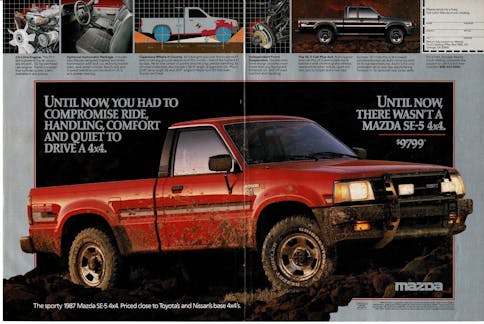
While the Buick was a victim of engineering mandates of the era, apparently Mazda shot themselves in the foot with a half-baked design made with no third-party intervention! Check out Arthur Hill’s fascinating tale of deceit:
“In 1988, as my family grew to 4, I needed to trade my Toyota 4X4 Pickup for one of the new ones with actual back seats to hold the two children. Unfortunately Toyota did not produce one until a few years later, but Mazda had a very nice looking B2600 4X4 that had back seats. This truck had the worst engine I ever had to deal with. I quickly discovered that if you really put your foot into it under a load, the engine would stutter and almost stall. Many trips to the dealer failed to solve this issue.
Finally a mechanic took me aside and admitted that Mazda rushed the truck into production without having an engine big enough, so they used a Mitsubishi 2.6 engine instead, but to make it easier to work on for their service people, they adapted their own accessories including the carburetor. Under load the only way the engine could get enough fuel was to link both barrels together all the time.
Needless to say, Mazda dropped this truck and you never see any on the road. Terrible truck with a terrible engine, but the actual Mitsubishi 2.6 engine was probably fine in their own vehicles.”
Mitsubishi 4G54/Chrysler HEMI 2.6-liter four-cylinder

No, not that Hemi. Or that one. We’re talking about the hemi-headed Mitsubishi 2.6-liter used on the Chrysler K-car and its derivatives. Chris Harshman said that the “worst engine I ever had was a 4-cylinder Mitsubishi engine in my 1982 Dodge 400. I used to joke with my friends that I could accelerate from 0-to-35 in 12 seconds.”
Subaru boxer flat-four/flat-six
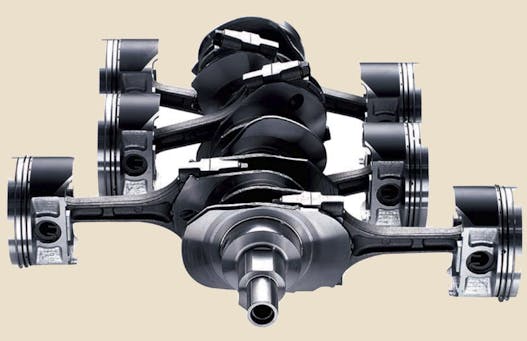
BobJ chimed in with one of the more offensive engines in modern history: the head gasket-munching Subaru boxer. But unlike other stories here, he made the same mistake twice.
“Had a 2005 and a 2010. Both blew head gaskets. Out of warranty but I complained and Subaru of America paid for half. Everyone complains about poor head gasket design & construction but I also wonder about open deck block design.”
GM 2.4-liter Ecotec four-cylinder
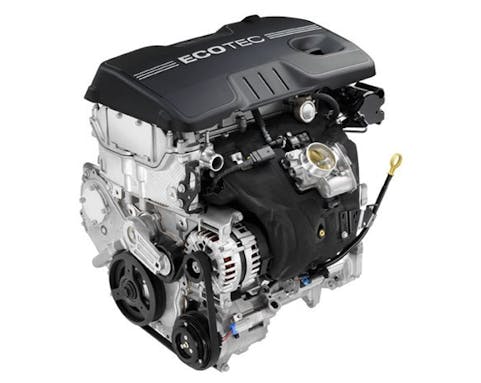
Hagerty Community member Rob keeps us in a more modern era, with a problem with the Ecotec 2.4-liter mill in his 2010 Chevrolet Equinox.
“Here’s a counterpoint for everyone who marvels at the reliability of modern cars. Launched just after GM’s bankruptcy, I should have known they probably cut corners on validation but couldn’t pass up a nice sized SUV that cracked 30 mpg.
It went through numerous high pressure fuel pumps. The timing chain tensioner went bad. The variable cam timing system went out and timing chain would slap like crazy when you started it. It had a bad heat treat on a pin in the cam shaft. Started burning over a quart of oil every 1000 miles and was rebuilt under warranty just before 50k Powertrain warranty expired. And I never got anywhere near 30 mpg on the highway.”
Ford 1.5-liter Ecoboost four-cylinder

Steve notes that his 2015-vintage, 1.5-liter, Ford EcoBoost engine is “absolute garbage compared to every other engine I’ve had the pleasure (or displeasure) of operating.” His example needed a new long block after 60,000 miles, and this helped him create a visionary notion about the EcoBoost’s promise of power and efficiency in a single engine:
“The reality is that you can’t have it all and ultimately lose out due to the extra complexity and stresses on the engine. I am not sure if the other EcoBoost variants are like this and I don’t care to find out personally.”
Holden Starfire four-cylinder

Mr. Nigel Utting takes us to the Land Down Under, reminding us that “GM Holden came up with an abominable 1.9 liter 4 cylinder named the Starfire.” The lack of power likely made Nigel’s comments far from the minority, with fuel economy numbers there were disappointing to boot:
“Based on a cut down six, this god-awful thing used to have a couple of seconds delay between hitting the accelerator and responding, a bit like downloading revs of the internet with a slow connection.”
Ford Cologne V-6
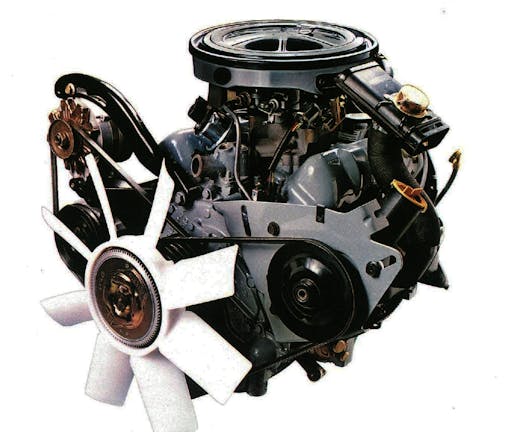
While Ford of Germany contributed greatly to the automotive landscape in Europe and the USA alike, Patrick Abbott reminds us that the Cologne V-6 wasn’t necessarily one of them. His example “regularly destroyed rocker arm assemblies and main bearings” while Richard Eaton was truly cursed with a lemon:
“I purchased a new, 1990 Ford Ranger with the 2.9-liter V6. Should have seen this coming when the transmission had to be replaced 4x for porous castings, and then both heads cracked under a recall. But then less than 50k miles after those heads they were again cracked sufficiently to turn the oil white in 1000 miles. Never again will I buy Fords.”
The Oldsmobile Diesel V-6
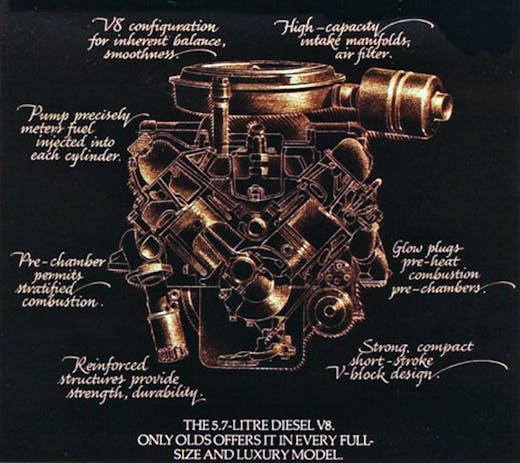
TerryTwoUtes picked up an example of an engine that history hasn’t looked too favorably upon: the Oldsmobile diesel.
“My parents had a ’78 Oldsmobile Delta 88 diesel, the dreaded 350 diesel engine derived from the gasser engine. After about 5–6 blown head gaskets and even one full short block replacement, it was finally traded off. Only good thing was GM trying to save face and all of those repairs were covered under extended warranty.”
Cadillac HT4100 V-8

Speaking of obvious punching bags, Hagerty Community member Coffeyclan reminds us all how low Cadillac went upon the introduction of this “High Technology” motor:
“The worst was Cadillac’s HT4100 engine. Acceleration was at a snail’s pace, the timing chain went bad twice, etc, etc, etc. I sold this car before the warranty ran out!”
Detroit Diesel “Fuel-Squeezer”
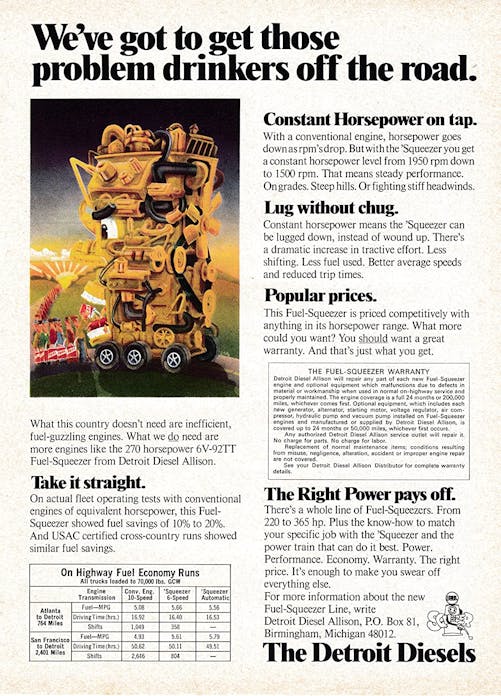
The one, the only, the legendary DUB6 threw us a curveball, thanks to his experience driving commercial trucks:
“In the mid-’70s, I drove longhaul truck for a fleet operator that leased their rigs. Most of the trucks had Cat engines and either 13 or 18 speed transmissions. As fuel prices rose during the embargo period, the leasing company offered up a Kenworth needle-nose with Detroit Diesel “Fuel-Squeezer” and 6 speed tranny to test out. Guess who was low enough on the pole to get picked to drive it for what was supposed to be 3 months?
That thing was so gutless – and the gear ratios so far apart – that even on the slightest grade, I was lucky to be able to manage 20 mph, loaded. Empty, it might get to 50 downhill, but then of course, there would be a corresponding upgrade. Fuel squeezing? Hardly. Most of the big Cats were averaging 4.5-5 mpg. This little longnose managed about 6.0 – mostly because the throttle had to be just about wide open all the time just to maintain forward momentum.
Maybe would have been fine for a flat-land operation, but in the mountainous WEST, it was pretty sad. My trips started taking up to twice as long as was projected, and several appointments would be missed every week. After about 8 weeks, the truck went back to Kenworth!”
Toyota 18R-C four-cylinder
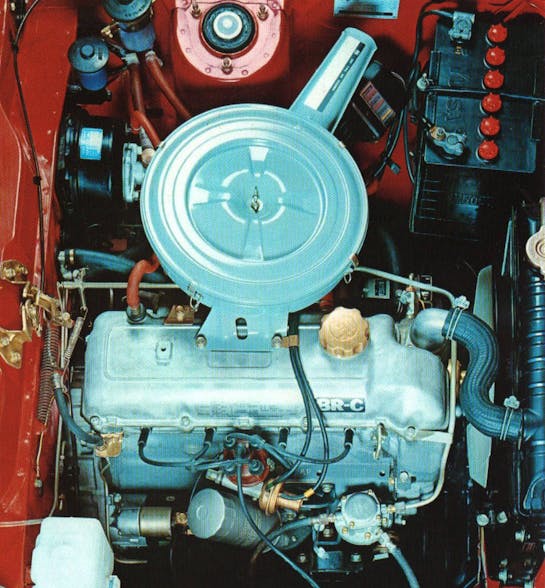
Let’s be clear on one thing: This isn’t a slam on all Toyota 18R engines, only the California-spec motor aimed at reducing emissions. Pete notes that the 18R-C was never designed for durability:
“I am a car guy and former auto mechanic. By far the worst designed and engineered engine was a Toyota 18R-C. I have had experience with more than one, and they all burned valves every 15,000 miles even after Toyota did a factory upgrade to “fix” the problem (which it did not). I drove the car for 75,000 miles and did 5 valve jobs before I woke up and sold it for $500, it did have a good clock though.”
Chevrolet 2300 four-cylinder

Of course the 2300 motor would make the list, as there were three negative comments to this effect. It didn’t help that the early Vegas weren’t the most reliable dance partner, and NCB chimed in with a personalized tale of ownership:
“I owned a 1973 Vega GT. Yes, I’m dating myself. First, and worst car I ever owned. Engine overheated due to poor cooling system design which led to scored cylinder walls in the aluminum block. It drank oil! Bad valve stem seals and “rusting away to nothing in 5 years” were icing on the cake. MotorTrend Car of The Year in 1971!”
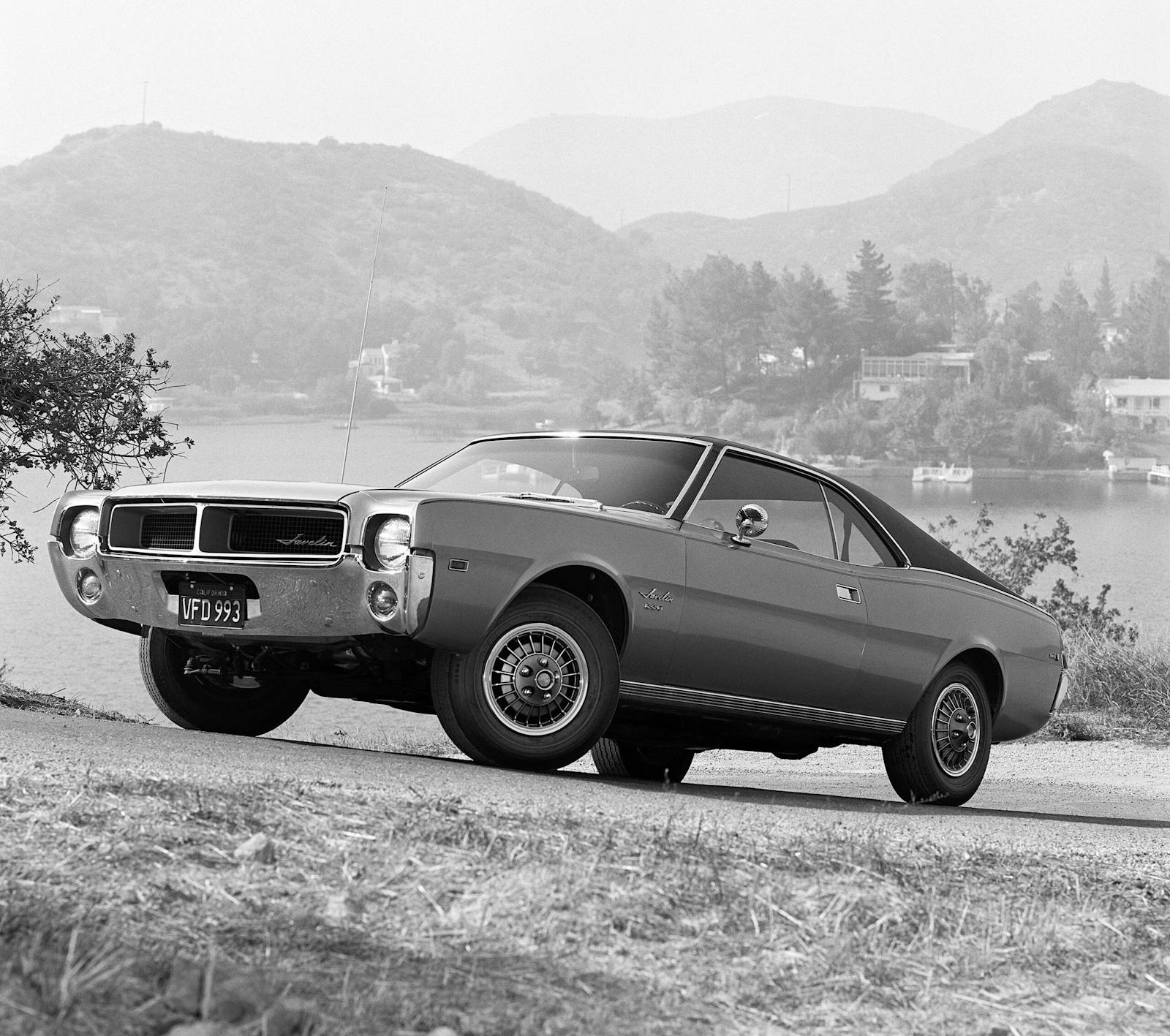
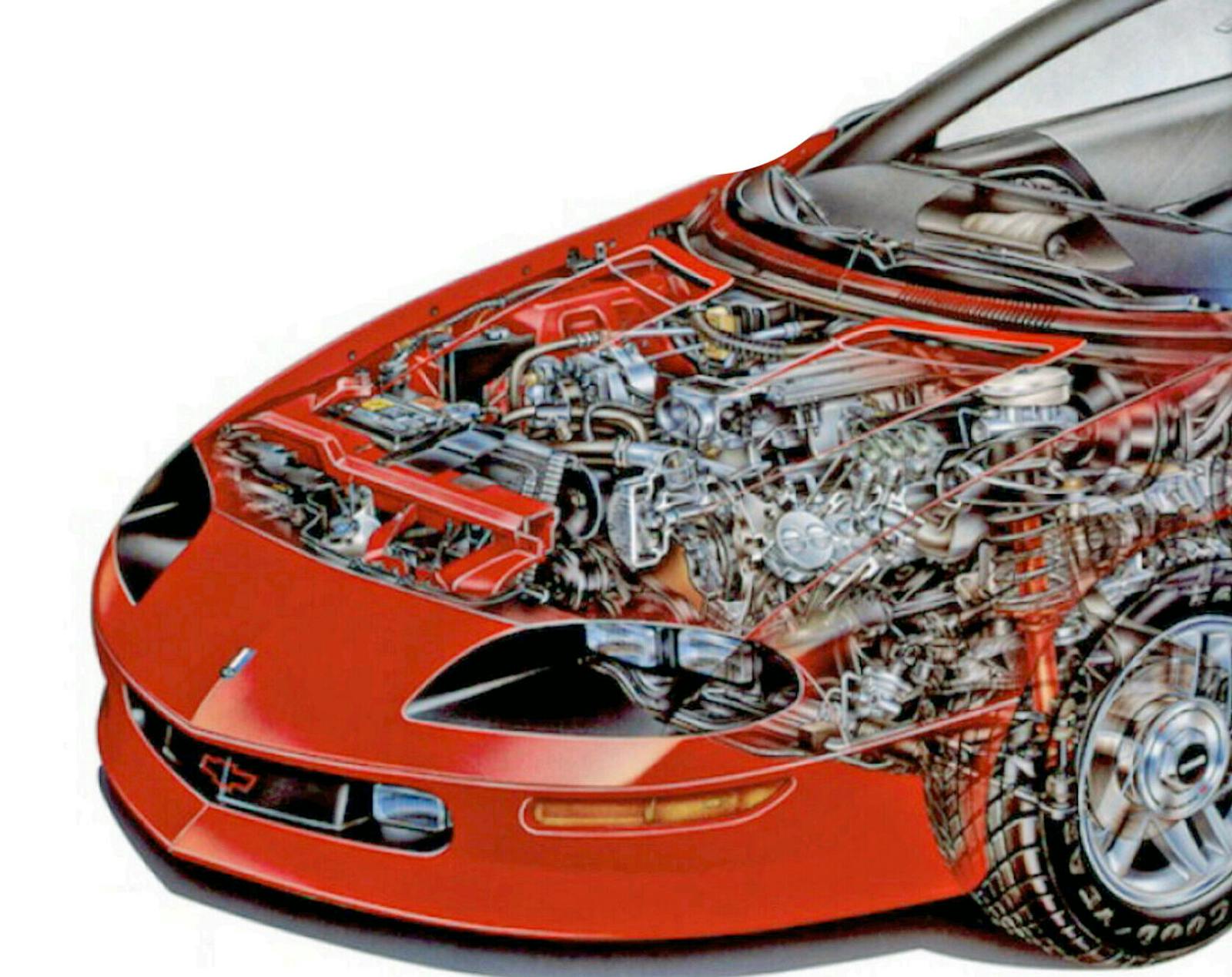
Ecotec is sorely misplaced here. Most went high miles and still do today.
I drove one ten years boosted to 23 pounds of boost and never has a mechanical issue. Good engine. I also was involved with John Lingenfelter when he was racing an Eco. He could get up to 1500 HP on the stock head and block. It is a much better engine than most out there.
My neighbor has one one with 250,000 miles before it needed any work.
There were others like the Ford Truck engine. The Power Stroke with back head bolts that made it easier to remove the cab than the engine,.
The Mitsubishi V6 that blew head gaskets. The Northstar, Nearly any engine that is Italian or French.
Early Hyundai engines. Yugo, Lada and Trabant.
The problem with the Ford engine was the cab and not the motor. We had to remove the cab to repair a broken spark plug… and ultimately replace the engine in a gas version
You had to remove the cab to change the head bolts. They would break. The engine needed head studs.
I’m surprised that the 1.9 ohv engine in the 70s Audi 100 LS (land shark) never got mentioned. I was a service advisor working at a Porsche+Audi dealership between college stints. The engine was mounted at something like a 20 degree angle so apparently the oil didn’t like going ‘uphill’. We had one towed in and when the technician opened the hood, he yelled loud ‘you guys have to come and see this shit!’ enough so that the entire shop could hear him. We were a good sized dealership so there were about 15 technicians gathered around the car. The technician performed what I could only refer to as a non surgical c-section and pulled the errant piston from the hole in the block that it created when it divorced itself from the crank, with one hand. Thus, the birth of the German Vega.
I agree with the Audi 100 LS engine assessment! The Solex carb was also terrible with bad flooding problems same as the Opel 1.9’s. The whole car was a terrible piece of work!
Right on with the Audi/Opel Solex 2 barrel carb. Only way we could stop them from overflowing fuel was to solder the 2 barrel fuel jet shut. The cars ran great, never had a problem after that. Customers not notice any problems with the modification. We probably did this to 20+ Audi 100’s and Opel 1.9’s. The problem went away in 1975 when they got Bosch FI. Of course they discontinued importing or making the two cars in ’76.
My family had a ’73 Audi LS and experienced all sorts of issues with the engine (among other things). It was so bad that the Audi mechanic(s) dismissed it as a “Montag Auto” (Monday Auto), which was the name Germans give to lemons back home (the thinking being that a “Monday Auto” was terribly built because the guys assembling the engine and car were all still hung over from the weekend).
100LS was the absolute worst car and engine in my 50 years of car ownership. Everything went wrong and the motor was a disaster. I have no idea how Audi survived that POS. Bought it new and ditched it in less than a year. Have never entertained an Audi since.
YEAH. I had one of those 2.3 Vega’s – was worn-out when I got it at 65,000 miles, burned oil badly and was so rusty that I finally junked it when I went to raise it on a lift and the only thing holding the body on the front suspension was GRAVITY and the steering column! BUT the Audi 100 LS’s I worked on were indeed even worse!
THAT is a lot of 100LS bemoaning! My 1st car was a 1973 (German Racing Orange!) two door sunroof manual transmission sedan. It was 1982 so it really was not that old of a car at the time. The front wheel drive was not common then – so it was a hit in the high-school parking lot when I spun the front wheels. I was pretty tough on the old ride but it put up with my shenanigans pretty well.
Years past (like 40 years) & an acquaintance of mine imported (from Germany) the finest fully professionally restored silver 2 door sunroof 100LS sedan automatic on the planet. But… He found parts procurement to be an issue… So, I bought it! My 2nd 100LS, how crazy is that? Its nearly perfect (honestly) and know what? You will not see another one (I guess cause they are all crushed!).
I was working as a salesperson at the Holbert dealership in Warrington, PA in 1978. The parts manager’s demo was a ’77 100LS 2-door. One day I sold it to a customer. When it drove off the lot for the last time, owner Bob Holbert reached into his pocket and handed me a $100 bill and thanked me for selling the last 100LS on the property. I still greeted the customer when they brought it in for service. They loved it.
I agree with the Ecotec comment. The 2.2 in my Saturn Ion has 240K miles and the 2.4 in my Solstice has well over 100K and both without a burp of problems. Frequent oil changes is the key however to longevity.
Very specific 2.4s. Hagerty should have been more specific.
The one in your Solstice is not the one they’re referring to. Those are the LEA and LEF versions, high compression, DI, VVT, etc.
https://rxmechanic.com/2-4-ecotec-engine-problems/
Agree 110%. Great engine.
Over 26 years at GM I know all the engine’s here. Some get a bad rap but I had the 2.4 Ecotec in a 2013 Equinox and drank oil like crazy. I also knew the genius John L. and he did make 1500 hp in the S10 truck…but don’t forget that was the last race car he ever drove.
The world of engine durability for GM has flipped. The best 4 cyl. now, and ever, make is the 2.0 Turbo, and yes from the Ecotec family. The old days you walked away from Turbo’s. Now the better parts go in the turbo engines. The normally aspirated engines have loose tolerances, weak rings, and to many many light cast parts. In my family we have four 2.0L turbo’s going back to 2008 HHR SS, a 2014 Regal and two 2019 TourX. Not a lick of problems with any of them.
Anecdotes are fun.
Speaking of GM…
2.8/3.1 V6s. I have had 2, 4 in the family. 100% rate of failure. None covered by warranty.
GovLoc (G80) rear differentials, I had 2 fail, parents, uncles, sibling – all had theirs fail at some point. None covered by warranty.
My Dad replaced his GovLoc with another and it failed again. I used a traditional plate limited slip, no additional failures. Until…
…and the aluminum AAM 925 front differential housing in a 2500 w C6P suspension – cracked after 22 miles of graded forest road, while pulling a tent trailer. GM wouldn’t stand behind their trucks or their warranty (19,000 miles).
That was the last late model GM vehicle I’ll ever buy. I’m not alone either, in our solidly pro GM family, no one even owns or shops new GM products anymore.
We had 2 Dodges in the 90s both with 4 cylinder engines and they both blew head gaskets by 50K miles. We have not owned a Chrysler product since.
The writer is not talking about the turbo 2.0 but the 2.4 Ecotec.
I totally agree! The GM Ecotec was a good strong engine. It doesn’t belong on this list. I never had trouble with mine.
You do realize that the article is critiquing the 1.5 Litre four cylinder Ecoboost engine? Not the 3.0 Litre truck engine. Reading comprehension is important.
yup – not sure what the difference is with the 2.4 over the 2.2 ecotech like the one in my HHR with over 200k on it. have gotten well over 30mpg on the highway if keeping it around 60-70. after 30K of driving on it myself and doing a lot of maintenance/repairs myself i find it’s actually a decent old cheap car to own. holds a lot more cargo than similar cars too. I’ve seen many hhrs with 250K to even some in the high 300K range still going. one at 370K and the original owner claimed still same engine/drivetrain too.
There are so many engines on that list that some would argue are among the best…
The Iron Duke – gutless, but bulletproof
The Chrysler 2.2… I have no personal experience but some folks I know think they revolve on water
The Quad 4… come on… 180 HP out of a 4-banger in the 90s… who cares if it vibrated a little
Buick 3.8 or 231 or whatever you want to call it… bulletproof
Subaru flat 4… I had an 80’s GL wagon back in the day that taught me that underpowered cars are not for me because I destroy them. That poor thing took years of savage flogging and redline (+) shifts on every shift before finally giving up the ghost… because it overheated and the temperature gauge wasn’t working right
Cadillac HT motors – had some early hiccups like all of Cadillac’s early aluminum engines but eventually evolved into a solid motor. My Allante 4.5 is running strong with 150K miles
Here’s one bad motor that others may find controversial – the Toyota 20R/22R family. I had a 77 Celica with one of those gutless wonders – or I should say three, because they all suffered from low oil pressure that would eventually lead to knocking and/or catastrophic engine failure. I put 3 engines and three transmissions in that car over the same general time period that my ’79 Coupe Deville ticked off 290K miles. Not having learnt my lesson, I bought an early 80s toyota pickup with a 22R that had so many %^&* vacuum hoses on it that I could never get that thing to run right and eventually sold it.
I do find the complaints about the 22R strange. I’ve owned and/or otherwise been closely associated with approximately half-a-dozen 22R-engined trucks and SUVs. In fact, there is one in my driveway even as I write this. I had both a 1983 and a 1986 SR5 pick-up, and had a close friend with an ’83 that I used to wheel with a lot. All three of those ran like champs, and I know for certain that at least one of them had 200K miles on it before it left my stable. I’ve not witnessed any oil-pressure issues or vacuum problems on any of these engines I’ve been around. I found them to be relatively easy to work on – mainly because they hardly ever needed much more than basic upkeep. I certainly don’t doubt that TG had issues, but based on my experience and observations, I tend to think they were exceptions to the rule. That family of engine has powered hundreds of thousands of Toyotas for decades – hard to believe they would have lasted so long if they were junk. 🤨
I also find complaints about the 22R strange. I got over 80K trouble-free miles from my 1984 pickup before I wrecked it hitting ice on I-78.
My 86’ 22R 4×4 ate head gaskets for lunch. ( 4 replaced) I did use it to tow 2 snowmobiles up into the Sierra most winter weekends. So I attribute the problem to putting the engine under stressful conditions. But I believe they were known for that, due to the Aluminum head. I sold it with nearly 300k miles on it. No other issues during that time.
His specific 22R was likely the victim of the smog pump/ vacuum line crusades that started in the 70’s and mostly died off by the mid 80’s when the shade tree mechanics figured out that these cars were designed to run WITH all of that (Crap) under the hood. My dad was one of those, “ you don’t need all of this ship under there”
The South African Cressida had a Toyota 22R motor and those engines would never die. They were stolen very often and when found the car was still perfect but the engine was missing! Hundreds of SA taxis ended up doing many hundreds of thousand miles on those engines with only very basic servicing.
I have a 1985 toyota 4×4 that has 22r and it has 286,000 not a power house but still runs great.
This inconsistency of opinions on the 22R does not make sense. My 1984 Celica has the 22R engine in it, with 157,000 km’s on it and has never been opened up. Of course, it runs like a top. Wondering if the article’s title should not have an * on it, stating, “under normal wear and tear”.
For some clarification… it was the 20Rs (at least the ones I dealt with) that had chronic oil pressure problems. The one 22R I had had the spaghetti mess of vacuum hoses. I can’t really speak to its reliability as I did not have it long. My 22R was carbureted, and my buddy had one in the same general era that was FI and the FI version did not have a fraction of the vacuum hoses – so being carbureted was part of the problem with the 22R
My most disappointing engine in my life was the DOHC-32 valve 4.6 V8 in my 2001 DTS. Fantastic car for power, comfort, luxury, and handling. The engine was powerful, sophisticated and ran like a dream. Until the heads/block assembly failed as the long head studs began creeping out of the aluminum lower block threads at 215,000 km/130,000 mi. Even though I changed the coolant and oil religiously from day 1. Then it would overheat in 30 seconds under load, as the compression gases entered the cooling system and air-locked the water pump. The open deck block did not help. And the crank rear main seal leaked like a sieve after 125,000 km / 80,000 mi. The motor also burned oil like crazy after 100,000 km / 60,000 mi, due to carboning in the piston rings due to high cylinder temps, and the 32 valves. It should have spec’d synthetic oil. 1 litre of oil needed with each tank of gas. Repair/replacement would have been $5K + back then. No factory help from Cadillac on this – might as well have told me to pound salt. Magical car to drive, fantastic engine when new – but the motor was garbage after 100,000 mi. Very, very disappointing.
3.8 liter Buick v6…bulletproof?…. hmm…
Absolutely a great durable engine, it just took a few years. Well a lot of years considering it came out in 1962 designed off of the aluminum V8! Really didn’t get great until the 86 turbo (GN and T type and even better in the 89 Turbo TA) for RWD. When the balance shaft was put in and it became the 3800. By 89 it was really good, it got better and better all the way into the 2000’s for all those millions of FWD cars.
I have a 1985 Toyota 4×4 with a 22R 286,000 miles still going strong one headgasket and one timing chain.
I bought a new Dodge Omni in 1985. It had the 2.2 litre engine and standard transmission. One of the best cars that I ever owned. Changed the oil every 3000 miles, and drove it over 200,000 miles with no major problems.
I’m surprised the Ford 5.4 3-valve didn’t make the list. It’s notorious for needing complete replacement due to oil pressure/cam phaser/timing chain problems.
…and spitting out spark plugs (along with it’s modular 4.6L V8 cousin).
Yeah, but some 5.4’s felt left out and got invited to the plug puke party.
The engine wasn’t the problem. The spark plugs were a regrettable two-piece design that were prone to breaking and sending one half into the cylinder.
Yeah, it amazes me that the spark plug can work it’s way out with the coil bolted on top of it
We had a small business and used Ford E-series vans with 4.6 or 5.4 engines. We’d make sure they had upgraded spark plugs, which have been produced to work well in these engines, and we would use full synthetic oil changed every 5,000 miles. The trucks would run 250,000 miles without problems, at which point we’d sell them and get a new one. Once in a while I’d see one of our old vans, still running around.
The thing about the 5.4L 3-V is that if it’s properly maintained, it runs for 150,000 miles before having problems. The issue is that when it DOES have problems, it’s usually catastrophic, and a repair/rebuild isn’t possible. I’ve seen this engine run for 300,000 miles without issue as long as synthetic oil is used exclusively, and changed at 5k to 7.5k intervals. It’s hard to call an engine BAD if it lasts for 150,000 to 300,000 miles.
If all you can expect is 150k miles with impeccable maintenance on a modern day engine, that ain’t good – not even close. Honda, Toyota, Chev SB, BB, LT & LS, etc. are just getting going at 150k. You need to re-evaluate your life (and engine) choices.
How long should they last if not considered ‘bad’
My ’04 Solara 3.3 V6 has 599k km (375k miles) on it. Still running like a champ.
The maintenance guide requires semi-synthetic and oil changes every 5K miles. We’ve followed that during its life during my ownership and later my daughter’s. It’s still her only vehicle. Upon hearing about the spark plug issue, I had my original set changed at 50K miles. The original two-piece design was later updated with a one-piece design. A lot of people misattribute the bad spark plug design as an engine problem.
Not to mention jettisoning spark plugs like a three year old trying broccoli for the first time. Ford’s repair was to install a helicoil into the guilty spark plug hole. I had a friend with an Expedition (we called it the one way Expedition due to its regular and frequent visits to the dealer, most of which were not under its own power)
It puked spark plus with such frequency that Ford finally replaced both cylinder heads.
I really liked these trucks but when I set out to purchase on of these used with a 5.4 some time ago I found 5 in a row that had spark plug issues. Always the rear plug on the right side which requires pulling the engine to remove the head to repair correctly. All of these trucks were in very good shape otherwise. One even blew the back plug while I test drove it. Sad. even sadder, I ended up purchasing a Chevy with a 5.7 (350 Vortec) and found that they had common intake manifold and head gasket issues. I gave up and replaced the 350 when the bugs showed up.
Interesting! I’m running a Ford Zetec in a Lotus 7 and was considering upgrading to the increased Ecoboost hp… maybe I should be happy with the reliability I have.
Where is the Cadillac V8-6-4 ??
It was mentioned: Cadillac HT 4100
The 4-6-8 is not an HT4100. The 4-6-8 is a conventional 368 V8 and is a solid engine and the if one did not like the cyl cancellation all you had to do was unplug the solenoids on the valve covers and voila! V8 all the time.
The HT4100 is a completely different engine which shares nothing with the 4-6-8 or any previous Cadillac V8’s
That V8-6-4 is in the salvage yard where it belongs…
Nothing wrong with basic 8/6/4. I think this was a very innovative idea to meet gov’t fuel standards, it was just too complicated without the the use of a full blown computer on board. The big complaint was about the change over from 4 to 6 cylinders which gave it a bad wrap in the press which scared everyone away from it. A friend of mine had one of these in an 81 Eldorado. The average person would never notice the slight “jiggle” in the cross over. My friend installed a switch so he could choose to run without the rocker deactivation solenoids, meaning run on 8 cylinders only. IMO, Cadillac was ahead of its time on this one. If you love the style of this generation Eldo, get this one. It is has a lot more performance than HT 4100. BTW, I owned an ’85 HT 4100 that had all the fixes and was a great car for cruising just gutless in town, especially at Colorado altitudes.
Had a Cadillac with the 4100 engine. The intake manifold gasket failed and ruined the camshaft. Replaced it with a 4500 engine.
Humorous story: I worked for AMC in Procurement Analysis and was forwarded a phone call from an irate owner of that vehicle/engine. When I could finally get a work in, I explained that he had the wrong company, to which he replied: “General Motors, American Motors, what’s the difference?” Kind of a HUGE difference, I’d say!
I never worked for AMC! 😁
Can’t help but notice that most of these are General Motors…
Wrong – just over a third are.
Exactly!
Most of these engines have something in common: The ’70s and ’80s era.
I’ve had several vehicles (and still do) with the 2.4 liter Ecotech engine.
Can’t speak for others, but except for a timing chain guide failure at 100K on the HHR, no problems.
I bought the HHR used and suspect it may have had an abusive PO.
Don’t forget head gasket blowing Northstars. ANY engine with cylinder deactivation. ANY car that requires engine out for simple stuff.
You’re totally right about that. I’m a member of the NS blown head gasket club (2005 DTS)
And NS oil leaks! Wow!
ANY early version of a new engine design
I have another ‘parting shot’. This is the Ford 1.9 l that wasin Escorts and such, circa 1992. This engine had something that caused the engine to go into full throttle at random times. Imagine being at highway speed and the car decides to rev and ‘run away’! Later, Ford did have a repair including replacing some part, but until that point, you had to hold on, trust the brakes to slow the car enough to get to a place where you could safely shut the car down and restart it. Very scary!
I think those are the same engines that liked to randomly eject valve seats
I had a ’95 1.9 liter. It did not drop the valve seat, the valve seat came apart (shattered) during a sub-zero day sending metal fragments into the cylinder. Turns out the factory used powdered metal to form the seats. Didn’t stand-up to heating-cooling cycles. No recall. Not surprising.
I am amazed that the 3.0 ltr V8 Triumph Stag engine is not high on the list. Built with one row of head studs in at an angle that have to be removed before a head can be lifted off. Easily removed for the first few thousand miles, then a nightmare beyond belief at most times after that. Very few of these engines still in existence, which is no surprise.
Triumph Stag engine was not a design issue as much as it was a quality control issue. Coolant passages with casting sand in them and cam chain issues. Most of the US Stags still have the original engines in them. My original engine at 90k miles and counting runs strong and totally reliable.
Your comment is incorrect. Almost all Stags currently on the road have original engines still fitted and are worth more than conversions. Have owners 5 Stags and no issues. Owned my current Stag for 32 years, no problems…..
Not the engine itself per se but on the old Chevy Monza you had to move the motor to change one of the spark plugs.
70’s GM engineering low point.
Not sure how this myth got started, but you do not need to move the engine to change all spark plugs. It is tight but I never moved the engine on mine.
Correct. Just a rumor. I replaced plugs on these cars scores of times. Never lifted the engine.
I recall doing it once on my 70-something Monza Spyder with the small V8. One plug in particular sticks in my mind. I think it was from underneath using a couple swivels & a lot of profanity to get it out. Getting it back in required use of a foot of fuel line on the plug to get it started. I was reminded of that recently when changing plugs on my 95 Z28 Camaro. The scars on my fingers are starting to heal up nicely from that:)
The Monza was designed for the rotary engine that never came. Once GM realized they weren’t building it substitute engines went in its place. The V6 and V8 cars were notoriously difficult to work on for that reason.
Or the steering rack.
I had a late 80s and early 90s Buick with 3.8s (good motors no matter what the article says) and you had to undo the torque straps and jack the motor forward to get the back plugs. Not really a big deal once you understood that was the drill
3.8 GM I thought was a good motor, however I had a pair of Buicks with that and both died! I don’t recall how miles the first had but it might have been about a 140? One day I was driving down the freeway about 50 or so at rush hour. All the sudden it just died and I manged to get to the side. I had it towed to a shop It blew a timming chain which was odd. Of course it bent valves . The other had just turned over hundred grand. All the sudden it started to over heat. Towed to a shop and of course major damage. I came to find out that about a hundred grand the top end manifold gaskets would fail and blow the motor.
I was a Chev mechanic and can tell you plug change was a pain but wa done from over the fender and under the car, engine bolted in the vehicle.
My late brother had a Lincoln that he had for many years but claimed that he never changed number seven plug (I think it was 7) because it was near impossible to get to.
The Iron Duke engines power 100′ of thousands of U.S. mail trucks that have been on the road since 1987, 35 years. It must not have been a bad engine.
I believe the Iron Duke goes back to the early 60’s, that ad in the article is for the Pontiac Tempest of the era. It was the base engine in the Chevy II and Pontiac Tempest and could be ordered in early light duty trucks (think box vans for ice cream or bread delivery). The Chevy 230 and 250 6 cylinders were based on the same architecture if I remember correctly. The 292 truck engine was the same bore spacing with a taller deck height for the 4.125″ stroke.
The Iron Duke and the Chevy engines were similar, but the Iron Duke got a new cylinder head with crossflow porting, and a valve cover that leaked from the day it was new. The Chevy 153, 194, 230 and 250 engines were all based on the 194, which came out in 1962.
The cross flow head on the Iron Duke was not introduced until 1979, when it replaced the reverse flow head. And then used that miserable “Vari Jet” 2bbl carb.
Haven’t seen any good 4cyl engines from GM. I had a couple 2.2 Chrysler that I had no problems with and thought they were very good engines, same with the 2.6 mits engine. But then I wasn’t looking for a hot rod. They had adequate power and excellent mpg and no problems
The Pontiac Tempest 194.5-cu.in. four was nothing to do with the Iron Duke-whatever mill, and I don’t know how that misinformation came on stream. The 1961-63 Tempest/LeMans engine is purely and simply one bank of the 389-cu.in. V-8, which makes it a ‘slant four’ engine, and was an engineering dead end but was durable enough, and pretty powerful. It was the only four ever offered from the factory with an optional 4-bbl. carburetor, and the ’63 166-hp version is exactly half the horsepower of the 333-hp engine, as offered in big Ponchos and the GTO.
The 4 cylinder used in the early 60s was not an Iron Duke. Totally different. The Trophy 4 was used in the Tempest/Lemans from 61-63. It was literally was a 389 cubic inch V8 cut in half. They used the right side. It was just shy of 195 cubes(3.2 liter). It used a 2bbl carb and produced anywhere from 110 to 155 horsepower. In 1962 there was a power pack option that used a 4 bbl carb and was good for 166 HP. The Iron Duke was not introduced until 1977. Despite similarities, the Iron Duke was not derived from the Chevy inline 4s and 6s.And they share nothing with the 153 Chevy 4 cylinders in the early Chevy II’s.
Yes the Pontiac 4 was based on half of the 389 V8. HOWEVER Chevy did have a 4 cylinder sold briefly in the Chevy II based on the then new Chevy II six cylinder. After few were sold GM moved the engine tooling to South America (forgot which country) were the 4 cylinder was revised for use there and developed a good reputation. Later Pontiac used this engine, calling it the “Iron Duke”, in the final years of their version of the Vega. After that the engine was used in other GM products. While power was lackluster, there were high performance version in S. America, but of course they did not have to deal with emission controls.
The 4 cyl Chevy II engine from the early 60s went to GM de Mexico, was converted to metric fasteners and installed in the Opel Olympico just in time for Mexico City to host the 1966 Olympics.
Very specific 2.4s. Hagerty should have been more specific.
The one in your Solstice is not the one they’re referring to. Those are the LEA and LEF versions, high compression, DI, VVT, etc.
https://rxmechanic.com/2-4-ecotec-engine-problems/
Tom, you mis-remember: architecture is only vaguely similar (see my other note, below) and as far as I know, zilch parts from the Tempest “early ‘sixties” engine and the CII-etc and “Iron Duke’ fours interchange. Besides having the expected four pistons, eight valves, etc, the biggest similarity between the two are the ball-stud mounted rocker arms. And, this was originally in the USA a Pontiac innovation that Chevrolet pre-empted, tho both emerged in the new 1955 V-8’s of the respective marques. Check your sources?!
YUP, and I ran one in my boat for 20 years only changing the oil once a summer and eventually a distributor bushing sent the timing all to hell so got it rebuilt with real bearings. No problems and second owner still has the boat/motor!!
I find this article misses the target. One person had a problem and hates the car.
I rebuilt engines during the 80 & 90’s.
When you see the same engines in all the time with the same failures. that warrants a lemon.
The Vega motor, oil use beyond the norm
The Hyundai Pony required a replacement head on at least 1/2 of them.
The Toyota 3VZ-E V-6, required the bolck to be resurfaced and we did like 10 a week. The dealer mechanics must have loved this one.
The Olds diesel
The TR7 motor
And the Mitsubishi 2.6 was a money maker for us too.
The cadillac Northstar
You got the point EXACTLY.
I agree with your summary. And one not mentioned (besides the Vega motor) was the Rotary motor.
But I’ve had 2 Dodge 2.2 (Turbos). On to 200 k and current to 260 k miles. The older ones had head gasket issues (pre 88), but when they went to 11mm head bolts, problem gone! Current 88 Daytona has 275 hp at front wheel! Maybe the non Turbo car motors were not as good of components?
Interesting that you mentioned the rotary. It took years of R&D on the part of Mazda to get this engine to become the winner that it eventually became. But even then it was a design that was very unforgiving of neglect in the proper care and feeding department – something that over 80% of car owners are/were guilty of, especially college co-eds enjoying the cute little RX7s that their parents bought them for graduating high school. But what eventually drove the rotaries away was the ever-increasing emission system rules that the design could not keep up with, as well as the design-limited efficiency ceilings that rotaries faced after the 1990s but piston engines did not. One thing us rotary fans remain grateful for is that GM did not follow through with the rotary in the 1970s. Had GM done this there is a 110% chance that their bean counters would have truncated the R&D process and cut corners on production – rendering any GM-produced rotary a certifiable piece of sh!t and (by extension) killing nearly all sales of ANY rotary-powered car on the planet. In short, Mazda’s successful engineering would have gone to waste by the time the first RX7s were introduced because nobody would have been willing to take a chance on buying one. Handing the rotary design to the pro-rotary decision makers at GM would have been the automotive equivalent to handing a loaded AK47 to a two-year-old.
Does anyone remember the German NSU rotary engine from the 60’s? A riend had an NSU something, I think it was a hardtop “spyder” that beat us all in our MG Midgets, Healey Sprites and TR Spitfires.
I rebuilt the engine on a 1973 Vega installing cast iron sleeves in the cylinders and It ran great and was a good little engine. Of course ,who wants to go through the trouble/ cost of sleeving an engine . In my case the cost was not bad for me as I bought the car that was pumping oil past the rings for a song.
+1 on sleeves in a Vega 2.3.By late 70’s Vega’s were $100.00 cars when engine failed. Sleeve the cylinders and freshen rest of engine they were good for 100k +. Trick was to replace postage stamp sized radiator with one from an A/C equipped car. That fixed the overheating . Rust problem however made it so engine outlasted body.
Had a 74 bought new sold in 1982 at 80,000 miles. Still ran well for a Vega. New overheated. Used some oil but not bad. Of course I checked level constantly and changed every 3000 religiously.
I had a 1980 TR7…100% agree!! TURD
Jeep Wagoneer Tornado ohc straight 6 used oil when new, after broken in, after ”fixed”, ‘second version’ and until it was finally discontinued about 1965 (?). My Dad tried two of them and then finally traded it in for a 327 Rambler powered Jeep Wagoneer; yet another disaster.
I had a 1994 Mustang with the v6 232 Ford Essex V6 Engine (3.8 L). It was the worst car I have ever owned. It blew head gaskets all the time from driving highway miles, nothing hard on the engine.
I was 16 at the time and didn’t know better, I put some much damn money into the P.O.S. Getting rid of it finally opened my eyes that car don’t need to go into the shop every other month.
Bad motors..care to list them..I agree bout the 73 vega motor..40,000 miles then blows head gasket frys.in the summer..65 corvair..leaks out oil thru.those valve seals like a gusher..then runs hot..don’t try the heater too…66 396 motor.runs hot and eats all the gas.94 octane you can pour down it..600 holley..pours out more gas that thru the motor..the 3.6 v6.in the 80s..very weak sister.301 Pontiac motor will throw every rod in the motor .out..bad bearing.caps…small block chevys..really good motors..the Ls 325 truck motor..really good motor..new vette motor..man it’s a hoss…good and bad..70s..not good….really some of them..truck motors are better..
Had a 3.8 in a Windstar. You are right. It’s a piece of junk. Ate head gaskets like crazy, transmission wasn’t much better
I was amazed that this POS was so far down the list. 93 Taurus w 100k kms ate it’s bearings, suspect head gaskets done by previous owner and sold on. Nobody would rebuild so installed new one. Approximately 60 to 70 ,000 k later did it again. Also horrible tranny too. Crap gas mileage and no power. Only vehicle I’ve owned that has seen so many tow trucks. I refuse to even look at Fords since. All known common problems and Ford of Canada offered zero help in any way. Lots of other problems that I don’t have the patience to type out. Worst car I ever owned. Used to see Taurus and Windstars regularly dead on the side of the road. Gotta stop now before my blood pressure gets too high.
I had the same motor in our 1988 Mercury Sable LS wagon, and it also blew a head gasket with similar usage. The thing that caused me to take a break from Ford products was my father’s 1989 was covered under warranty, for exactly the same issue, but because my vehicle was a year older they refused to cover it. Otherwise, the car itself was a great kid hauler and vacation machine…it even handled and drove well for being a wagon.